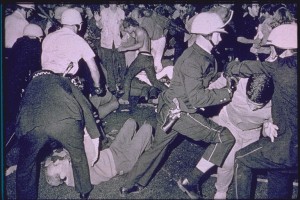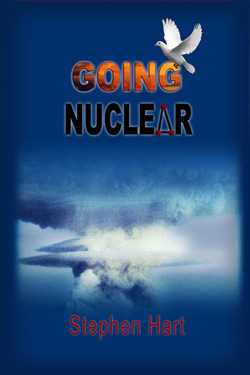Going Nuclear, the novel, follows young Ph.D. chemist Arthur Weiss in 1969 as he tries to help stop the Vietnam War.
Historical Perspective:
In April 1968, following anti-war demonstrations on the campus of Columbia University, activists seize five buildings. Within days, however, the NYPD retakes the buildings, leaving approximately 150 students injured and over 700 arrested.
 During the August 1968 Democratic National Convention in Chicago, 10,000 protesters gather in the streets to protest the Vietnam War. They are met by 26,000 baton-wielding police and national guardsmen. Approximately 800 protesters are injured.
During the August 1968 Democratic National Convention in Chicago, 10,000 protesters gather in the streets to protest the Vietnam War. They are met by 26,000 baton-wielding police and national guardsmen. Approximately 800 protesters are injured.
In November 1969, following anti-war demonstrations on hundreds of college campuses across the country, a contingent of 250,000 protesters join the ‘mobilization’ peace demonstration in Washington D.C., the largest such gathering in U.S. history. Yet the war continues on.
The Issue:
So what would it take to stop this seemingly unending war, a war in which tens of thousands of American soldiers had lost their lives for no apparent reason? To Arthur Weiss, the answer did not appear to be anti-war protests.
A potential answer:
Arthur agrees to participate in a radical plan to force the government to a peaceful settlement, even though the plan involves him helping to construct a nuclear bomb. He is young, his only brother has been killed in Vietnam, and the invitation to participate is being extended by an attractive blonde. But as is often the case with ambitious plans, complications arise.



